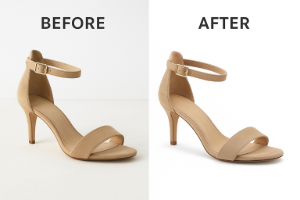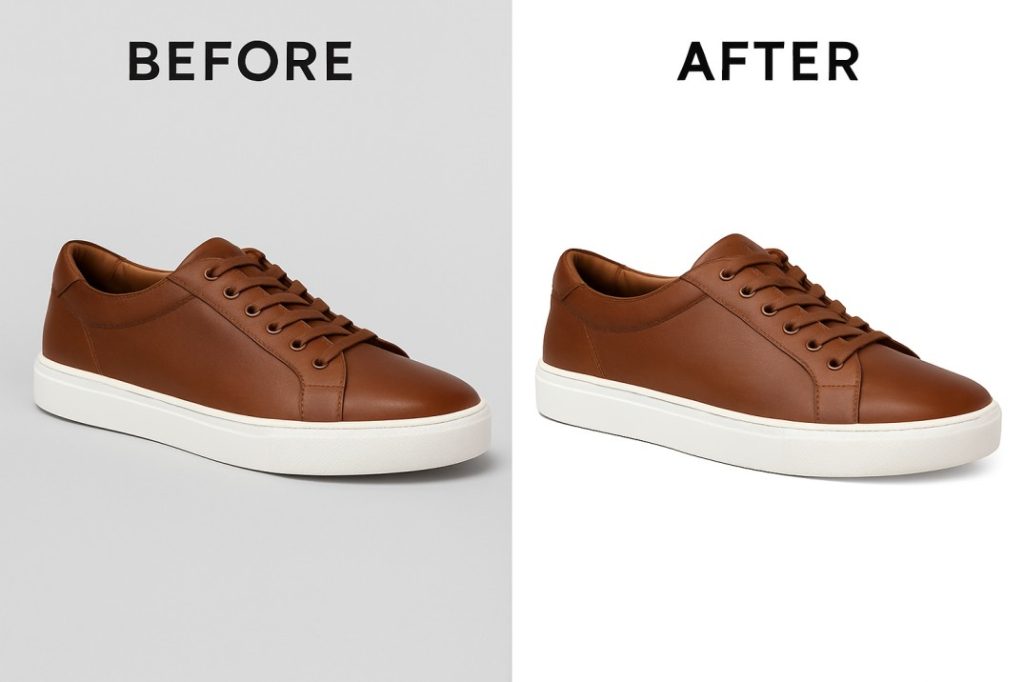Imagine walking into a store where products are displayed in poor lighting, with dust on them, and no clear labels. Would you trust the store enough to buy something? Probably not. The same principle applies to e-commerce—except here, your “storefront” is your product images.
In fact, research shows that 93% of online shoppers consider product photos the key factor in making purchase decisions. That’s why product photography is more than just “taking pictures.” It’s about creating visual trust, building your brand image, and driving conversions.
At Photolixa, we’ve edited and enhanced thousands of product photos for e-commerce businesses, Amazon sellers, and photographers worldwide. Today, we’re sharing 21 powerful product photography tips that can help your brand shine online.
Table of Contents
1. Invest in Good Lighting
Lighting is the foundation of great photography. Poor lighting creates shadows, dull colors, and unprofessional looks. For e-commerce, soft, even lighting works best.
-
Use natural light near windows if possible.
-
For studio setups, use softbox lights for controlled brightness.
-
Avoid harsh overhead lighting—it creates unflattering shadows.
💡 Pro Tip: Use two softbox lights—one from each side—for balanced lighting.
2. Use a Clean and Simple Background
Your product should be the hero, not the background. A cluttered setup confuses buyers.
-
White background is standard for Amazon, eBay, and Shopify.
-
Light gray or pastel can add variety without distraction.
-
Lifestyle backgrounds (like a desk or kitchen counter) work well for ads, but not for the main product listing.
📸 At Photolixa, our background removal service ensures a clean, crisp look every time.
3. Master Camera Angles
Customers want to see your product from every angle. Don’t just take one front-facing shot.
-
Show front, back, side, and top views.
-
Capture 45-degree angles for depth.
-
For fashion items, show both flat lay and on-model shots.
The more angles, the less doubt buyers have.
4. Show Product Scale Clearly
One common complaint in e-commerce is: “It looked bigger/smaller in the picture!”
-
Place your product next to common objects (coins, hands, or phones).
-
For fashion accessories, show models wearing them.
-
Use graphics like size charts in addition to images.
This builds trust and reduces returns.
5. Use a Tripod for Stability
Blurry photos = lost sales. Even the steadiest hands can’t beat a tripod.
-
Invest in an affordable tripod for sharp shots.
-
Use the timer function to avoid shaking when pressing the shutter.
-
For overhead shots (like flat lays), try a tripod arm.
6. Highlight Product Details
Details sell products. Customers love zooming in to see the stitching, fabric texture, or engraving.
-
Take close-up shots of key details.
-
Show product features like zippers, labels, or craftsmanship.
-
For jewelry, highlight sparkle and stone clarity.
7. Capture Lifestyle Shots
Product-only shots are necessary, but lifestyle shots connect emotionally.
-
Show the product in use.
-
Example: A coffee mug on a desk, shoes on a runner, or a sofa in a living room.
-
Lifestyle photos help buyers imagine owning the product.
8. Maintain Consistency Across Images
Brand trust comes from consistency. Imagine one product photo with a white background and another with a dark shadow—it feels unprofessional.
-
Use the same lighting, angle, and editing style.
-
Stick to brand guidelines for color and tone.
-
Consistency helps create a polished storefront.
9. Focus on Editing and Retouching
Even the best photos need polishing. That’s where professional photo editing comes in.
-
Remove dust, scratches, or wrinkles.
-
Adjust brightness, contrast, and color balance.
-
Add natural shadows for realism.
🎯 At Photolixa, we specialize in clipping path, ghost mannequin editing, jewelry retouching, and bulk product editing.
10. Optimize for E-commerce Platforms
Every platform has unique requirements:
-
Amazon: White background (RGB 255, 255, 255), product must fill 85% of the frame.
-
Shopify: Recommended image size is 2048 x 2048 pixels.
-
eBay: Minimum 500px but 1600px recommended.
Don’t upload random sizes—optimize for each platform.
11. Use High-Resolution Images
Buyers zoom in to check quality. Low-resolution photos make products look cheap.
-
Always shoot at the highest resolution possible.
-
Save images in JPEG for web and TIFF/RAW for editing.
-
Upload sharp but compressed versions for faster loading.
12. Add Ghost Mannequin Effect for Apparel
Flat clothing looks lifeless. Ghost mannequin editing makes apparel look natural and 3D.
-
Edit out the mannequin digitally.
-
The result: a professional, hollow look.
👗 Our ghost mannequin editing service is popular among fashion brands and Amazon sellers.
13. Capture Product Variations
Customers want to see every option before buying.
-
Show all color variants.
-
Include size comparisons if needed.
-
For electronics, show all available models.
14. Avoid Overusing Filters
Trendy Instagram filters might mislead buyers. Stay true to reality.
-
Keep colors accurate.
-
Adjust only brightness, contrast, and saturation.
-
Over-editing = disappointed customers.
15. Work on Shadows and Reflections
Shadows add realism. Reflections add elegance.
-
Use drop shadows to make objects look grounded.
-
Jewelry, watches, and glasses benefit from subtle reflections.
-
Avoid unnatural shadows that distract.
16. Retouch Jewelry with Care
Jewelry photography requires special attention.
-
Highlight shine and sparkle.
-
Use focus stacking for crystal-clear close-ups.
✨ At Photolixa, our jewelry retouching team brings dull photos to life.
17. Showcase Product Packaging
Many customers care about packaging. It reflects brand quality.
-
Take shots of boxes, labels, and branded wrapping.
-
For luxury items, packaging is part of the product.
18. Keep Props Minimal
Props can enhance, but too many distract.
-
Use props only if they relate to the product.
-
Example: Coffee beans next to a coffee mug.
-
Avoid clutter that steals focus.
19. Test Different Background Colors
White is king, but sometimes, different colors make products pop.
-
Black for jewelry.
-
Pastels for baby products.
-
Wooden textures for rustic branding.
20. Compress Images Without Losing Quality
Speed is crucial. Slow-loading sites lose buyers.
-
Use tools like TinyPNG or Photoshop export settings.
-
Balance quality with file size.
-
Aim for under 200 KB per image.
21. Outsource Editing for Scalability
Finally, the most important tip: don’t do it all alone.
Editing hundreds of photos takes time. Outsourcing ensures consistency, speed, and professional results.
📌 At Photolixa:
-
30+ skilled editors
-
3,000+ images processed daily
-
Prices starting at $0.39 per image
-
Fast 12–24 hour delivery
Conclusion
Your product photos are the face of your brand. By following these 21 product photography tips, you can create images that not only look professional but also convert visitors into loyal buyers.
Great photography builds trust. And with professional editing support from Photolixa, you can scale your e-commerce business without sacrificing quality.



